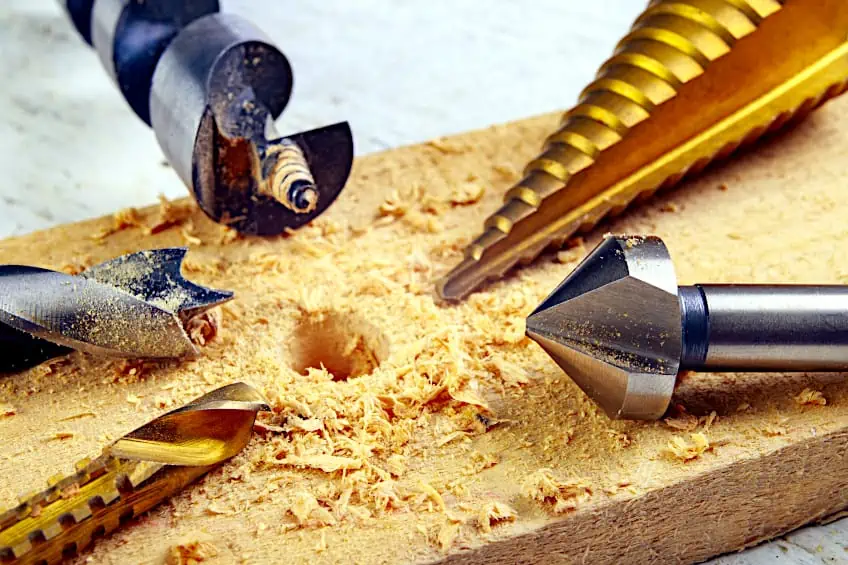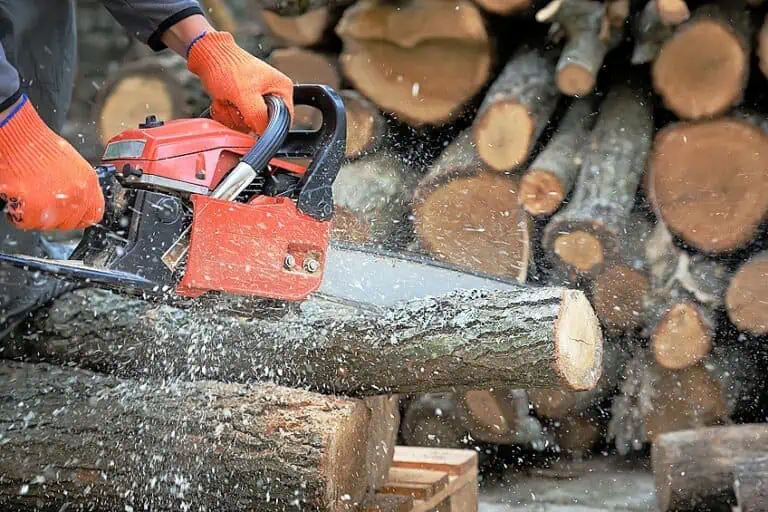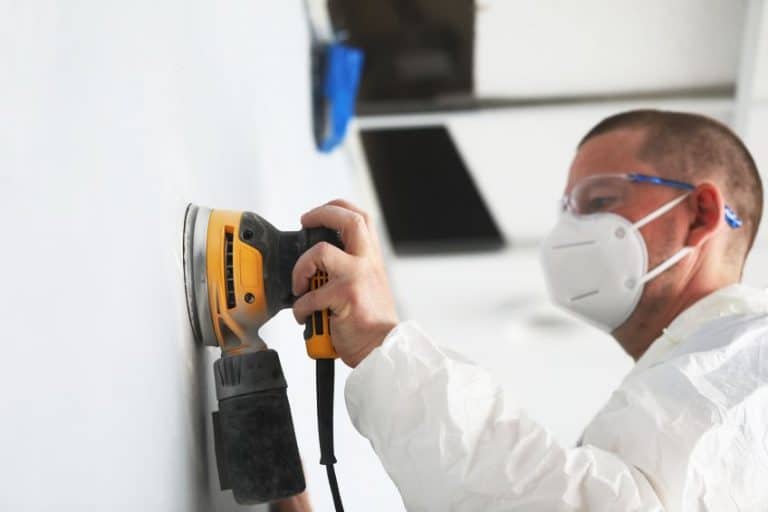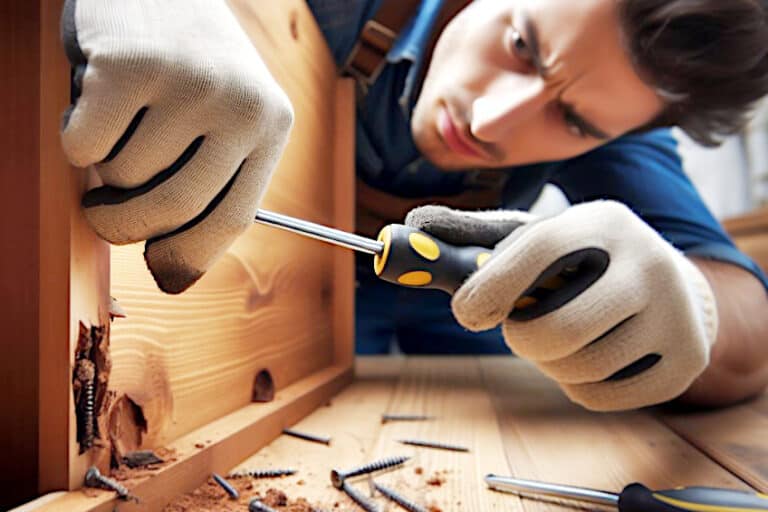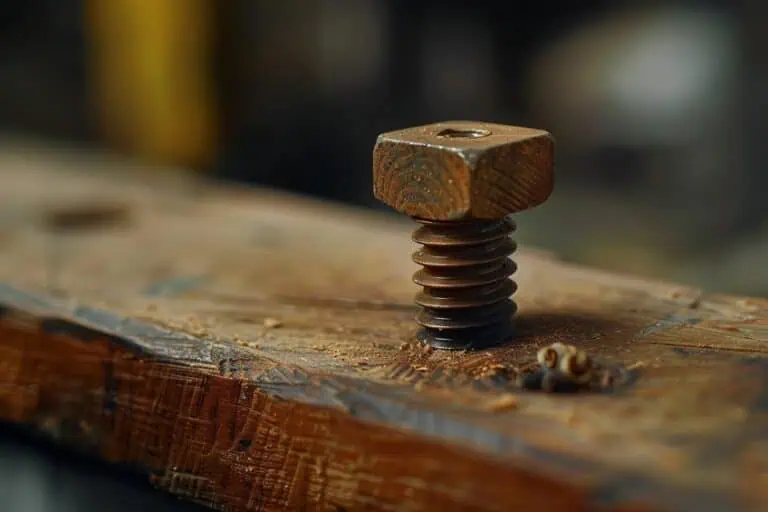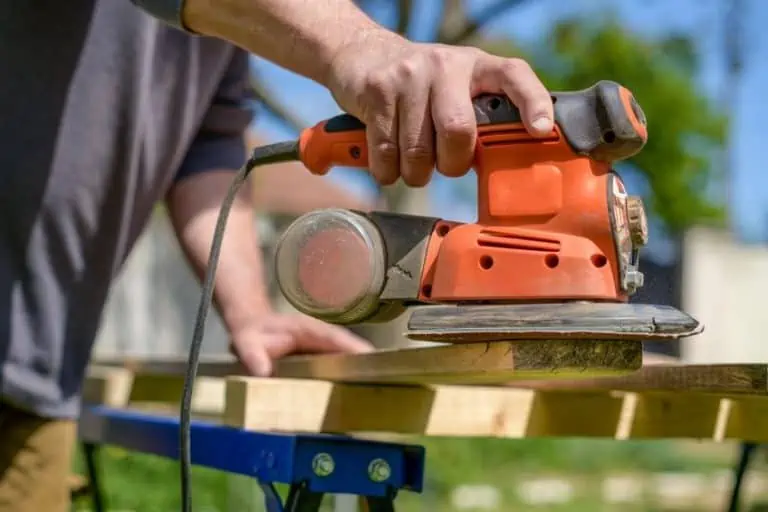Types of Drill Bits – Our Complete Guide to Boring Tool Heads
Drill bits, believe it or not, have been around since 35000 BCE. Early humans used little drill bits made of flint, stone, sticks, or even bronze to make holes in relatively soft objects so that they could be mounted or attached to other objects. We have come a long way since using sticks though, and these days we have a wide variety of drill bits to choose from. How many types of drill bits are there? A lot! So, let’s have a look at the different types of drill bits available to you, and why it’s important to have the right drill bit types for certain jobs.
Table of Contents
- 1 What Is a Drill Bit?
- 2 Type of Drill Bits
- 2.1 The Pocket Hole Drill Bit
- 2.2 The Drill Driver Bit
- 2.3 The Glass and Tile Drill Bit
- 2.4 The Brad-Point Drill Bit
- 2.5 The Annular Cutter Drill Bit
- 2.6 The Saw Drill Bit
- 2.7 The Adjustable Drill Bit
- 2.8 The Plug Cutter Drill Bit
- 2.9 The Countersink Drill Bit
- 2.10 The Twist Drill Bit
- 2.11 The Masonry Drill Bit
- 2.12 The Rivet Drill Bit
- 2.13 The Spade Drill Bit
- 2.14 The Installer Drill Bit
- 2.15 The Step Drill Bit
- 3 Why Is Choosing the Right Drill Bit Important?
- 4 Factors to Consider When Choosing a Drill Bit
- 5 How to Use a Drill Bit Correctly
- 6 Frequently Asked Questions
What Is a Drill Bit?
What are drill bits? Before we have a look at some different drill bit types, let’s establish what a drill bit is. A drill bit is best defined as a cutting tool designed to cut holes into a surface. What are drill bits used for? They can be used to cut round holes, cross sections, or even remove edges from a workpiece, making them one of the most useful tools to have in many professions.
Drill bits are used in wood crafting, engineering, prop making, and even surgery! There are many drill bit types out there. The variety of drill bits available is a response to different cutting needs, with some drill bits being designed to fit certain machinery and/or cut into different types of materials. Some bits are designed to cut certain shapes and prevent damage to certain materials.
Drill bits have been around in one form or another since about 35000 BCE. Considering that people have been trying to make holes in things for a long time this makes sense, but early drill bits weren’t like anything we have today. They were primarily designed to drill into softer materials, which allowed said materials to be connected to other objects, suspended, and/or secured.
These days we have drill bits that are capable of cutting into solid steel and pig iron like they’re butter. We have diamond-tipped drill bits capable of penetrating glass surfaces without cracking them, and even more obscure drill bits capable of even stranger feats, but these are often used for industry-specific work and will rarely be seen in everyday life.
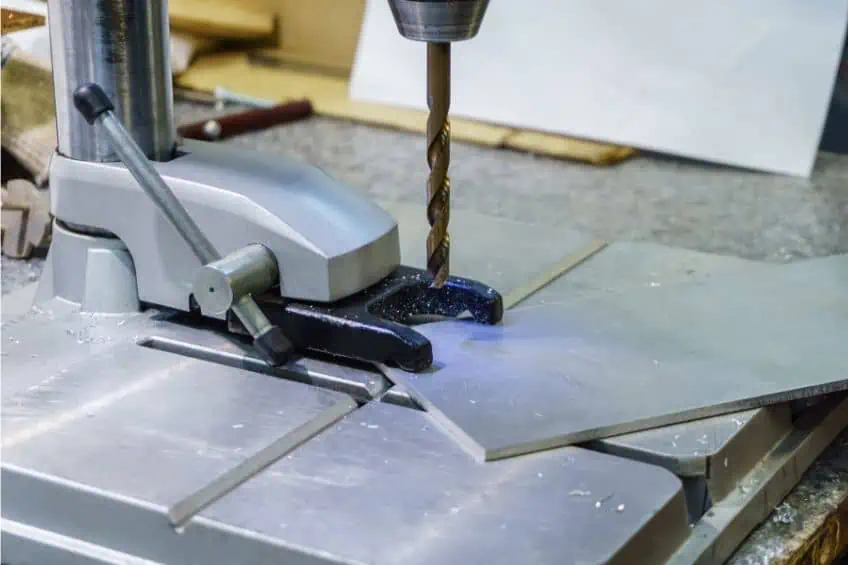
As you can see, drill bits are pretty useful, and aside from the different types of drill bits out there, you’ll also encounter drill bits of different shapes and sizes. Like other common tools, they are available in both imperial and metric sizes to accommodate users from different regions, and also like other commonly used tools drill bits can vary in quality according to brand and price too.
Type of Drill Bits
As you’ve probably gleaned by now, there are many types of drill bits out there. There are large ones that are used to drill oil from the ground, and there are little ones used to manufacture wristwatches. However, most of us will only ever see a handful unless your occupation or hobbies demand otherwise, so we thought we’d walk you through some of the more commonly used drill bit types below.
The Pocket Hole Drill Bit
Are you into woodwork? Do you make wood joins regularly? Well, then you’ve probably heard of the pocket hole drill bit. If you haven’t, the pocket hole drill bit is a relatively small drill bit that has been designed (as the name suggests) to create little pocket holes for wood joins. While it can be used for other applications, it is almost exclusively used for this application.
The bit itself is designed to produce angled holes in wood, which allows the holes to accommodate wood screws once it’s been cut.
The pocket hole bit has a unique look and is easily identifiable, as well as readily available at most woodworking and crafting stores not only in the United States but in most other countries around the world too. It is usually used in conjunction with a pocket hole jig that keeps the bit at the correct angle while drilling.
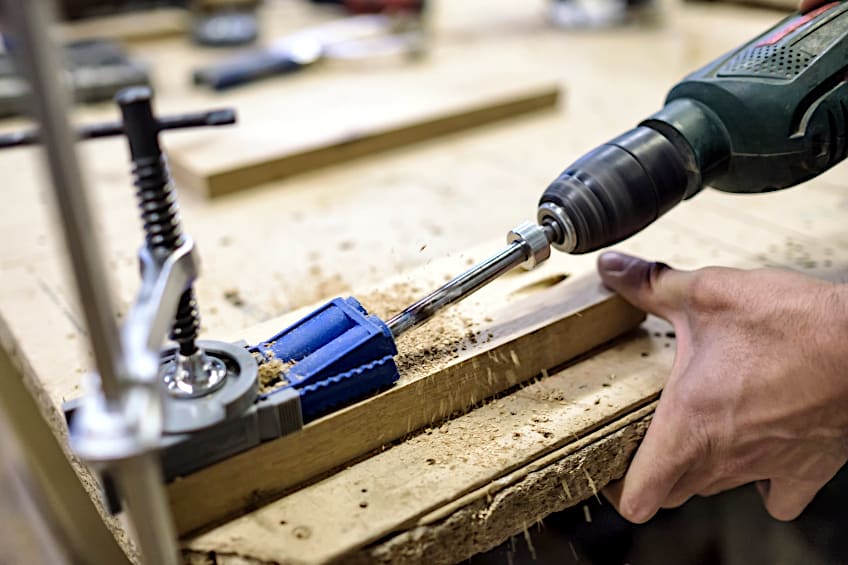
The Drill Driver Bit
Have you ever looked at a screwdriver and thought “If only you could turn yourself”? If you have, boy do we have the drill bit for you! Drill driver bits are designed to drive in and remove wood screws. Once a pilot hole has been made the screw can be placed in contact with the wood and drilled using one of these bits.
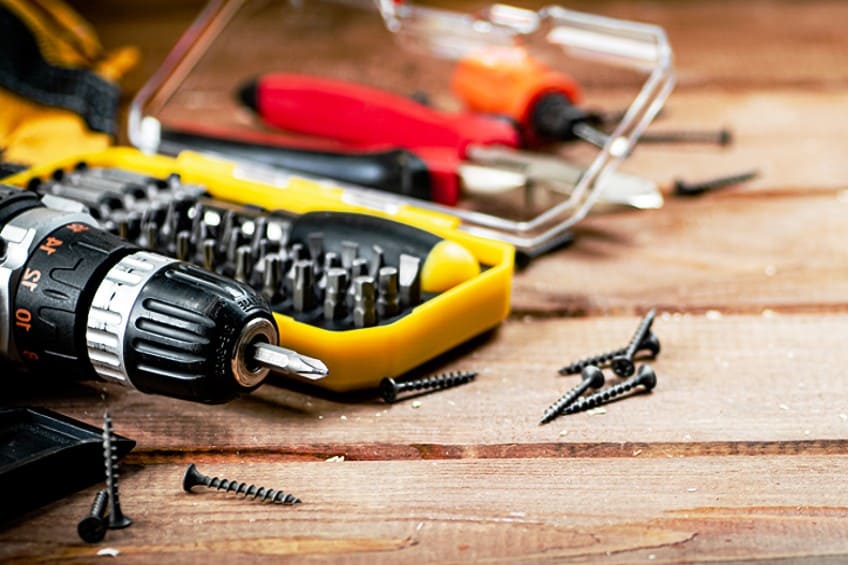
Driver bits are very useful, especially if you are trying to drive a screw into a particularly dense or knotty piece of wood. They are available in all manner of drive configurations to ensure that all screw types are accommodated.
Whether you have a Philips head or slot head screw you need to insert, a set of these should have you covered.
The Glass and Tile Drill Bit
If you ever find yourself needing to drill through glass, you will need one of these drill bits. They are very specialized bit types designed specifically to penetrate smooth and brittle surfaces like glass and ceramic tile, making them one of the least versatile bits on this list. However, considering that they’re pretty much the only way to reliably drill through these materials you might consider this to be a fair trade-off.
Glass and tile drill bits achieve the impossible task of cutting into extremely brittle materials thanks to their special tips. Their tips are typically diamond tips, making them pricey, but something of an investment for those in the trade.
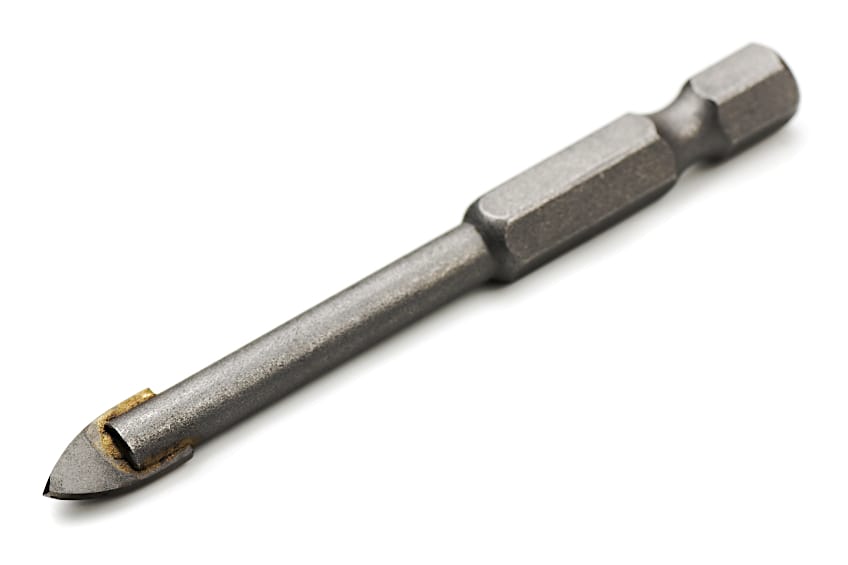
The Brad-Point Drill Bit
When it comes to accurately drilling a hole things can get a bit tricky, especially if you don’t have a lot of experience. Thankfully, there is a suitable workaround for this problem in the form of a brad-point drill bit. This bit has a brad at the end of it (a sharp metal point) that allows you to penetrate the surface of the wood slightly, securing the bits’ position before the flutes make contact with it.

Brads can be used as is or in conjunction with a pilot hole, ensuring that your trajectory stays true while drilling your hole.
They’re especially useful when drilling smaller holes like the ones used to install cupboard door handles, and some are even equipped with bits of rubber that ensure you stop drilling at a certain depth (depending on where they’re set).
The Annular Cutter Drill Bit
Similar to the saw drill bit, the annular cutter is used for cutting larger circular holes into metal. It is similar in appearance to the saw bit, but if you look closely, you will notice the serration on the edges of the cutting blades is different. This is because annular bits are designed to cut metal within far closer tolerances than drill bits.
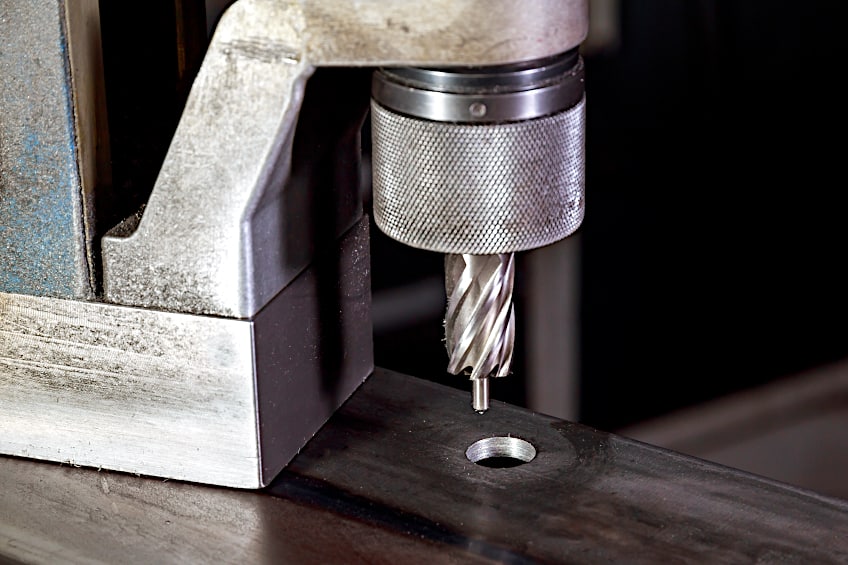
Some variations of annular bits without brad points are very useful because unlike conventional bits they preserve the core of your metal workpiece during the cutting process. Therefore this bit can be used to both create circular holes and produce circular cut-outs too! That being said, this bit is primarily used for engineering and fabrication applications.
The Saw Drill Bit
Saw drill bits are another staple in most woodwork spaces. They are best characterized as a cup-like cutter with serrated edges capable of cutting large holes in workpieces. Ordinarily, you would need a jigsaw to holes like these, but the drill saw allows you to cut these holes almost perfectly every time as you don’t need to follow an outline of your hole while steadying your hand the entire time.
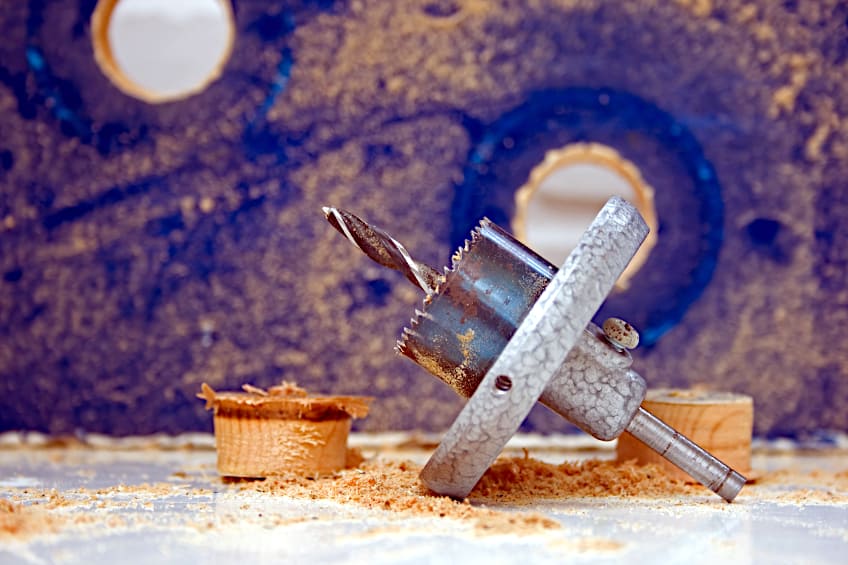
These are available with a regular bit in the center as well if needed, and they’re not designed for just cutting through wood either. Saw bits are also capable of cutting through metal! Usually, saw bits are used to cut holes into sheet metal, making them capable of cutting through car doors and surfaces of similar thicknesses.
The Adjustable Drill Bit
As you might have noticed, drill bits get used quite a bit in woodwork applications. It only makes sense that drill presses and other drill machines would eventually be developed to the point where drill bits don’t need to be removed to swap between them.
This is essentially what the adjustable drill bit is, a bit tool that can allow you to change the diameter of your cutting tool without swapping bits out.
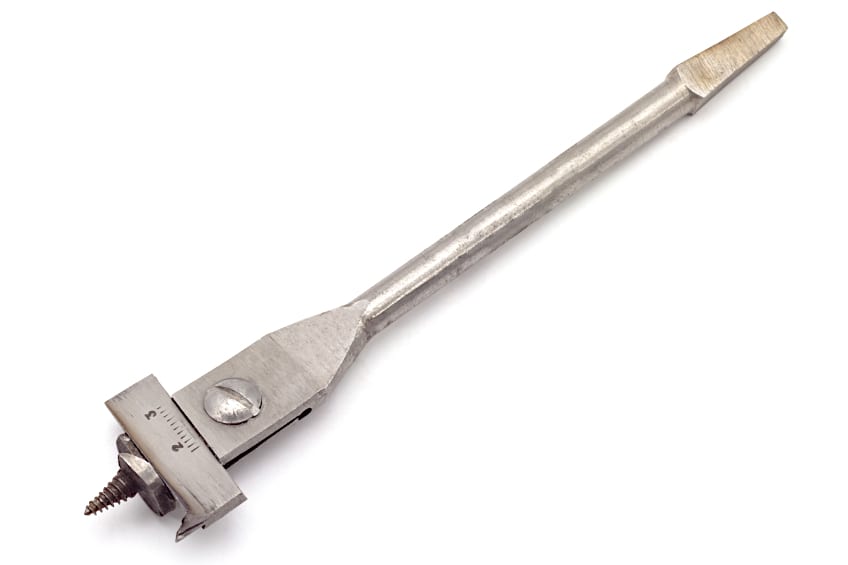
Why would you need this? Adjustable bits are generally used on drill presses, essentially to allow one to operate the press without needing to go through the process of removing a bit each time a different size is needed. This makes adjustable bits super convenient but you should know that adjustable bits aren’t quite as durable as individual bits.
The Plug Cutter Drill Bit
While most bits are designed to cut holes into other materials some are designed for other purposes. One of these is the plug-cutting drill bit, which has specifically been designed to produce wood plugs for occupations like professional woodworking and furniture making. How do they do this? Plug cutters have four sharp-bladed flanges that eat away at the wood around a single point, eventually producing a plug.
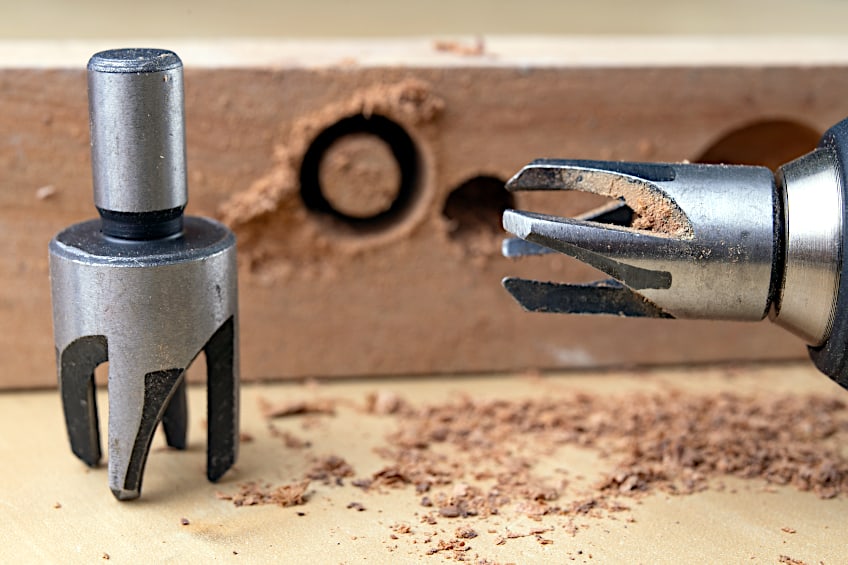
Plugs are super useful little wooden cylinders that can be used for a number of applications in wood crafting. For example, they can be used as dowels when joining wood workpieces or to fill holes in furnishings to ensure a flush surface which can then be stained or painted.
Plug-cutter bits aren’t very common though, and are mainly used by professionals in niche wood crafting applications.
The Countersink Drill Bit
Have you ever wanted to install a screw or bolt but don’t want to ruin the look and feel of your surface? If you have, you’ll be pleased to know that countersunk screws and bolts exist! These have a flat head that sits flush with the surface of your workpiece, and once they’re installed all you need to do is apply wood filler on top of the head and paint over it!
To facilitate the installation of these screws and bolts we have countersink drill bits.
Their tips are tapered to ensure both the hole and the surface is shaped perfectly to accommodate these fasteners, saving you from having to dress the surface of your workpiece after the fasteners have been installed. These are fairly common in furniture-making applications.
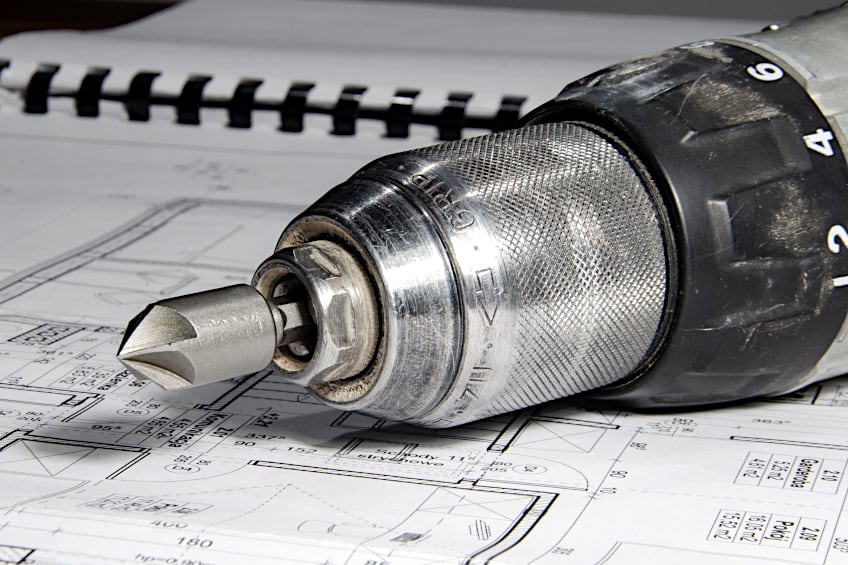
The Twist Drill Bit
When most people refer to a drill bit, this is generally the kind they’re referring to. Twist drill bits are considered to be a “standard” drill bit as they are the most versatile, most commonly sold, and generally most commonly used bit type across a number of trades. Twist bits can be used for woodwork, metalwork, and many other applications in between.
Twist bits are best characterized by their twisted flutes that funnel material upward as it cuts into a workpiece.
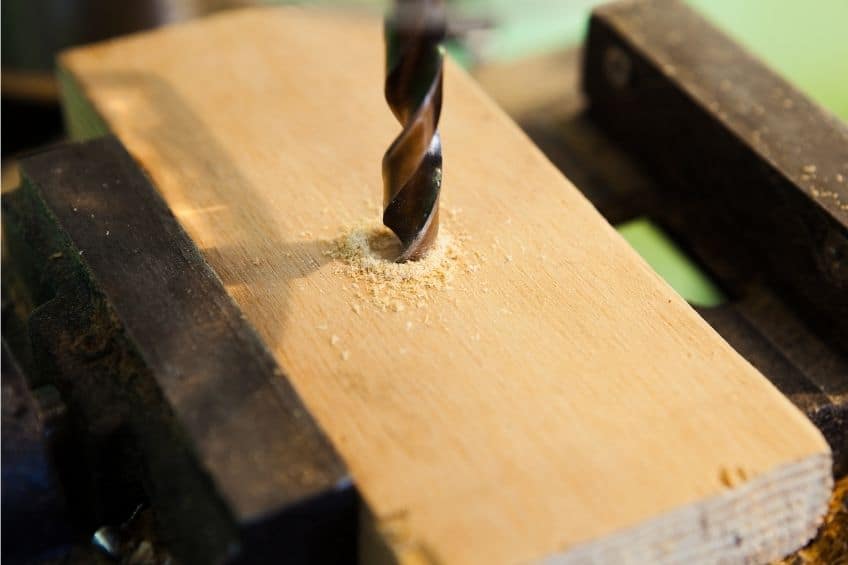
They are available in various sizes, harness ratings, and materials to ensure you always have the right bit for your workpiece. These also tend to be the most affordable and readily available of all the bit types, but quality can vary depending on the price range and brand of the bits.
The Masonry Drill Bit
Another commonly used drill bit type is the masonry bit. Usually used when paintings and photographs need to be hung up, these drill bits (as the name implies) are used to cut into masonry surfaces, usually using a decently powered hand drill.
Masonry bits are capable of penetrating both brick and masonry surfaces with relative ease and without the use of cutting fluid.
These are generally some of the most commonly used drill bits in electrical and building trades as it allows wall surfaces to be quickly and easily penetrated so that things like piping and wiring can be installed and/or repaired. As you can imagine these bits are rather durable and rarely need to be replaced unless they are misused.
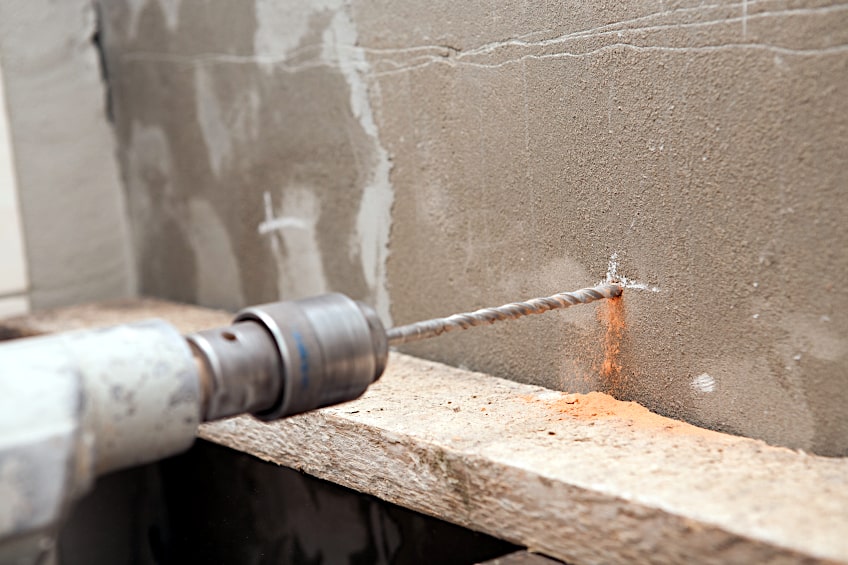
The Rivet Drill Bit
Rivets have become a staple in many industries as they’re easy to install and quite challenging to remove, making them an effective theft deterrent. However, to install rivets you need to have pre-drilled holes. This is where the rivet drill bit comes into play, allowing you to drill holes just the right size for a number of rivets.
While there are rivets capable of penetrating the surface of the metal, there are those that aren’t, and attempting to insert these without an existing hole could damage the rivet and damage your rivet gun in the process.
That being said, rivet bits are readily available and affordable so getting your hands on some shouldn’t be a problem.
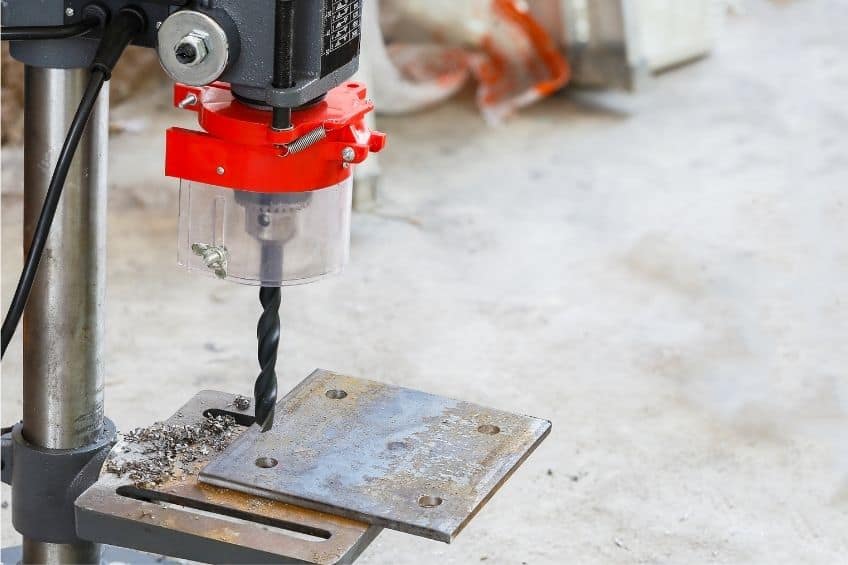
The Spade Drill Bit
Another drill bit used in home renovation by professional contractors is the spade drill bit. Visually, the end of the bit resembles a spade (which is how it gets its name) and is designed that way to ensure it is able to drill larger holes in surfaces. It is generally used on wood and drywall surfaces by contractors and DIY enthusiasts.
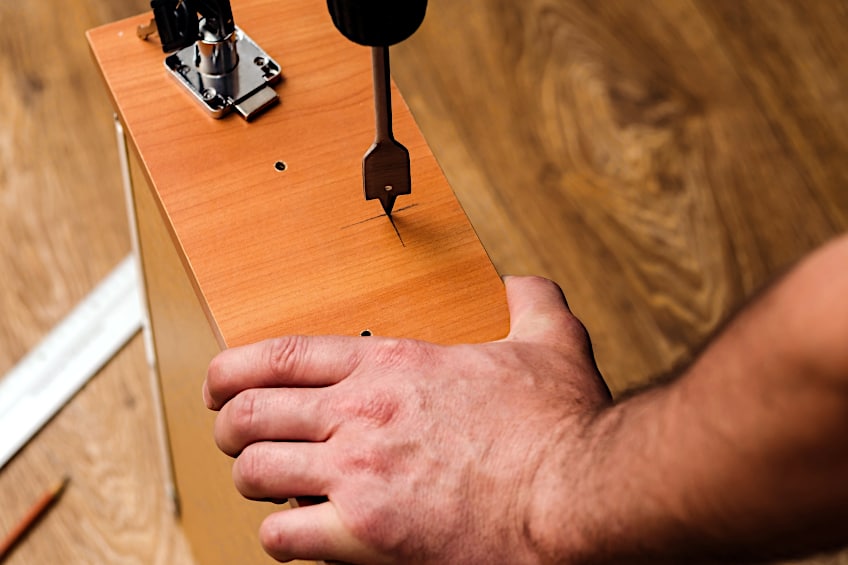
Why would one need this type of drill bit? When installing wiring you might find yourself needing to run it through a wall either in the interest of efficiency or simply to prevent it from being an eyesore.
This bit is capable of creating a hole big enough to run most household cables through, and thanks to its sharp tip your bit won’t move once it’s been positioned.
The Installer Drill Bit
If you are in the market for a truly versatile drill bit then you’ll love the installer drill bit. There are many professions whether it be building, electrical installation, home renovation, or even painting and one of these can really come in handy. Installer bits are essentially a blanket solution for cutting into a number of surfaces.
Installer bits are capable of drilling around eight inches into many surfaces around the home including drywall, some types of masonry, wood, and even mortar!
They also have a little hole in the tip so that once the hole has been made, all you need to do is pull the bit out, pop some wire into the little hole on the bit, and reinsert it into the hole you have just drilled to pull It through.
The Step Drill Bit
The step bit is a bit different compared to other multi-sized drill bits. Instead of a smooth taper or a wide flange like some other drill bits, this bit is conically shaped, with little steps along the taper, starting small at the tip and getting bigger toward the shaft of the bit.
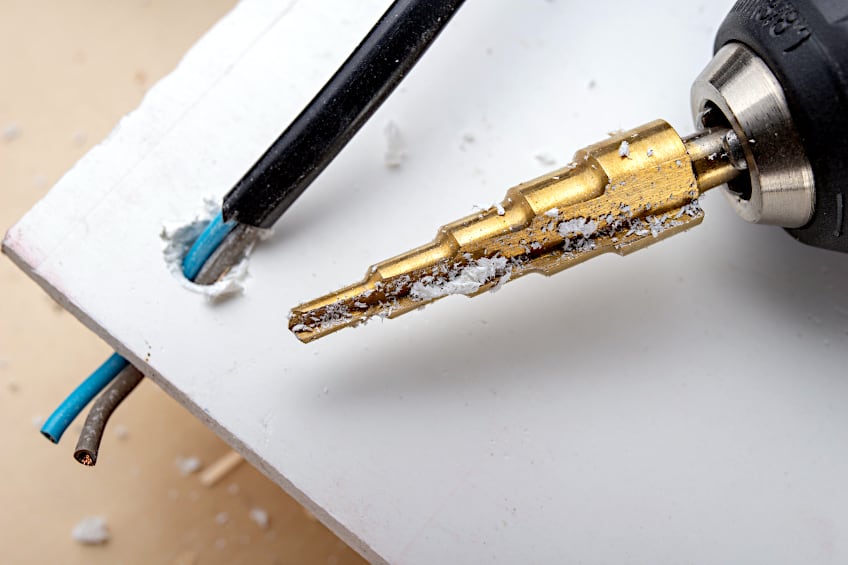
As you can see this is pretty unique even when compared to some of the other odd-looking bits.
Unlike most of the other bits we have mentioned so far, these are one of the few types of drill bits for metal. They are a really easy means of drilling holes of varying sizes without the need for using multiple bits, which can make a huge difference in a production environment or if you have a time-sensitive project to complete.
Why Is Choosing the Right Drill Bit Important?
If drill bits are designed to cut holes into things, surely, we don’t need all of these different types? Well, attempting to cut into materials with the incorrect drill bit could have disastrous consequences for both the bit and your workpiece. What are these ominous consequences, you ask? To answer this we’ve prepared a short list of reasons detailing why having the right drill bit for every job is of the utmost importance.
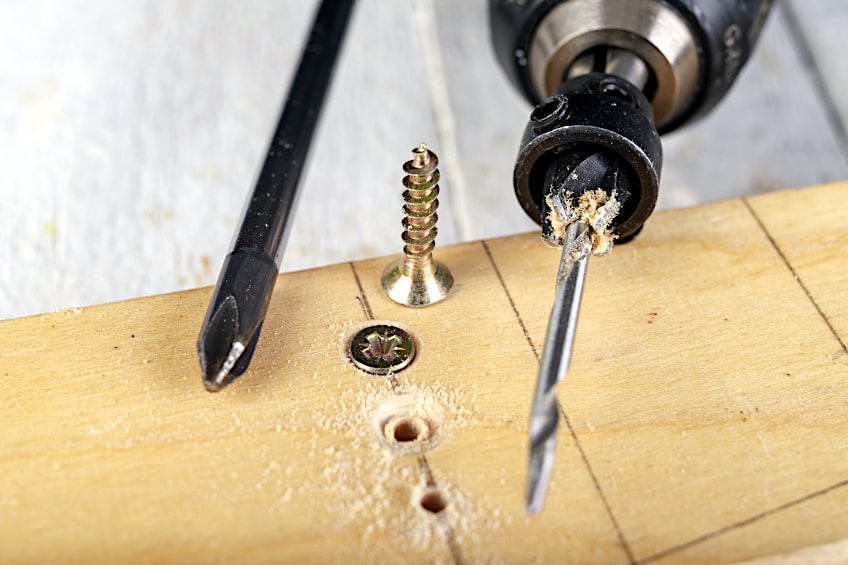
You Could Damage Your Workpiece
Using the incorrect drill bit can cause damage to the material you are trying to cut. If the incorrect bit is used, it could result in the material you are working with being damaged irreparably. Some materials require a bit of a specific hardness, sharpness, or shape to be cut correctly.
Using the incorrect bit could crack, warp, or otherwise misshape the material.
You Could Damage Your Drill Bit
You could end up damaging your drill bit as well. Drill bits are designed with certain tolerances, so using them on a material they are not intended for, or at speeds they cannot handle could result in your bit being damaged. This can be dangerous, especially if a bit shatters at high speeds causing shrapnel to shoot off in every direction with enough force to penetrate clothing, skin, and even bone easily.
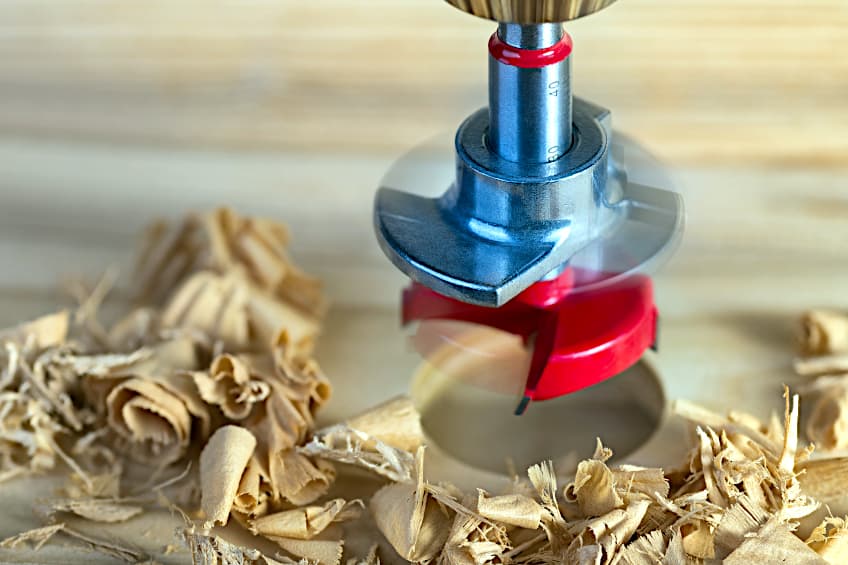
You Could Damage Your Work Area
The drilling process, like any cutting process, generates a lot of heat. After all, cutting anything generates a lot of friction, which turns into heat, and the higher the speed the but the hotter your material and bit will get. If the bit being used and the speed you are cutting requires the use of cutting fluid and you choose not to use it, the resulting heat could cause a fire in your workspace should flammable substances be present.
Always ensure that you know the tolerances of your drill bit and the material you are cutting. Tougher materials often require a faster cutting speed to penetrate, but if the incorrect bit is used at high speed and without any cutting fluid you could potentially start a small fire in addition to irreparably damaging your bit, workpiece, and workspace.
You Could Damage Your Drill
Whether you are using a hand drill or drill press, having the incorrect bit in your drill can damage it quite badly. If your machine is too powerful for the bit it will most probably damage your bit and the workpiece, and if your machine doesn’t have the rev range to accommodate the bit and material you are working with, you could end up damaging your machine, which can be pricey to fix.
Factors to Consider When Choosing a Drill Bit
When using a drill bit to make holes, there are some factors that you should take into account that could quite easily be overlooked, especially if your project is time-sensitive. As we mentioned previously, choosing the incorrect bit for your application can be disastrous, so here are a few things you should think about.
Type of Material
While there are many variables for you to consider when choosing a bit, the material you’ll be drilling into is one of the most important. Choosing the incorrect bit could result in you ruining the surface of your workpiece and drill bit. Understanding the properties of the material you’d like to drill into can therefore save you a lot of time and money.
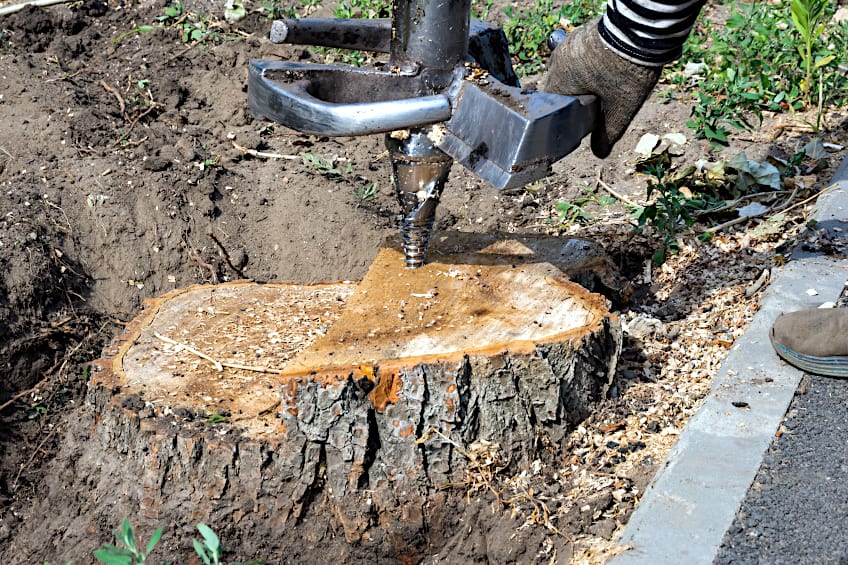
Type of Drilling Operation
Another important factor to consider before you begin drilling is the overall nature of the operation you are about to undertake. Will it be a high-velocity operation? Do you need cutting fluid? Could your workpiece use additional clamps? Do you need guards for this operation?
Think about the forces that will be acting your workpiece/drill, as well as the forces that will be produced during the operation. It is not only important for the longevity of your tools and surface, but the safety of you and those around you as well.
Shank Type
Shank types are important too. Using a shank type that is incompatible with your drill chuck can be disastrous, as it could result in your bit becoming loose during operation, which can damage your chuck, and workpiece, and potentially cause serious bodily harm to you. The most common shank types are straight shank, hex shank, SDS (slotted drive shank), SDS+, and SDS max.
Simply identify what type of chuck you have and ensure you use the corresponding bit.
Coating Options
Some drill bits have a coating on their exterior to improve their cutting performance and extend their lifespan. Coatings can also ensure that drill bits remain cool during the cutting process, but they aren’t always a necessary addition to your bits. Drill bits can be coated with a number of materials including titanium, cobalt, diamond chips and zirconium.
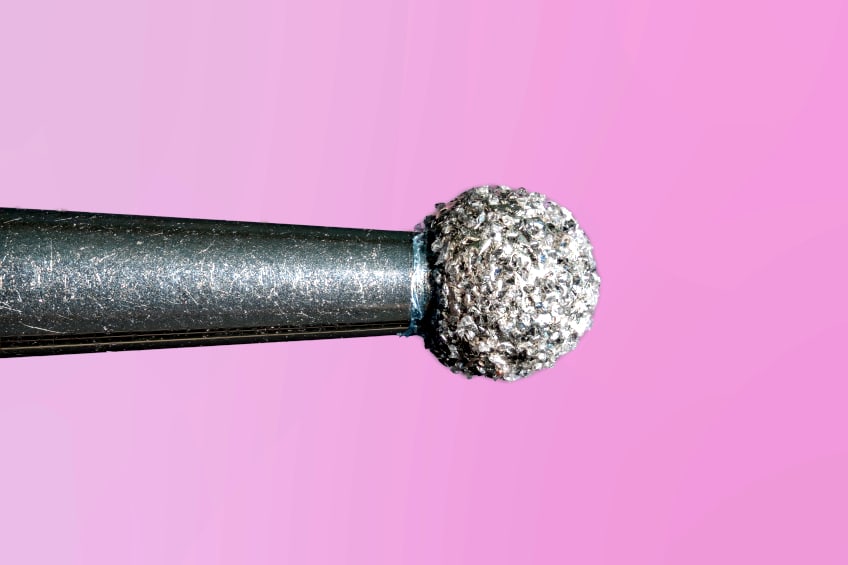
These coatings are used in heavy-duty applications to reduce friction and prevent corrosion, and in some cases can even help the bit penetrate certain materials.
Budget Considerations
Like most tools out there, you generally get what you pay for, but this doesn’t mean that you need top-of-the-line bits for everyday applications. Purchasing a decent drill bit set for masonry and woodwork around the home shouldn’t be exorbitantly expensive, but if you’re drilling into tough materials at high velocity quite regularly, it’s usually worth dropping a few extra bucks to ensure the longevity of your bits and clean cuts into your workpiece.
How to Use a Drill Bit Correctly
Having the right bit is only half the job, you need to know how to use a bit correctly to avoid damaging it and your workpiece. If you’re new to drilling, here are a few tips you can follow to ensure you start off on the right foot and don’t damage your presumably new drill and drill bits on your first try.
Choose the Right Drill Bit
While we have mentioned it a number of times before, choosing the incorrect bit is a really easy mistake to make especially if you’ve been preparing your workpiece for a few hours.
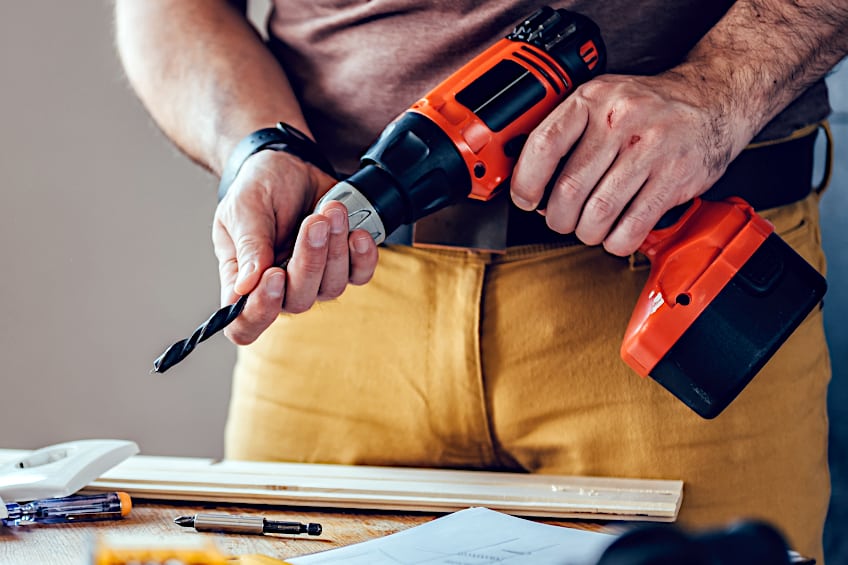
Identify the material you will be cutting through, what speed you will be drilling at, what type of chuck your drill unit has, and the angle you need to drill at, and what type of hole you intend to make.
All you need to do next is select a bit that fits all of those needs and you’ll be good to go, but don’t forget to wear some safety goggles and gloves when operating a drill.
Prepare Your Surface
Preparing your surface is pretty easy. All you need to do is ensure that the surface is nice and clean, and sand if you intend to stain or paint it afterward. Next, drill a pilot hole using the smallest bit in your set, or at least one that is a size below the bit you’ll be using to drill the actual hole.
You can clean the pilot hole out using a clean cloth or some compressed air when you are done to ensure a nice contact surface before you begin.
Using the Correct Technique
The trick when using a drill is to allow the drill to do the work. Essentially, as long as you hold your drill true to the workpiece and/or screw and don’t push into the drill too much you should be fine.
It’s usually best to start with high torque and low speed when drilling screws into place, and you can adjust these settings on the drill’s clutch which is usually located behind the chuck. That being said, drill depth can also be adjusted on some units, but it is not a common feature.
Maintaining Drill Bits
Like any other tool if drill bits are not maintained correctly they will eventually become unusable. Drill bits tend to dull over time so they will eventually need to be sharpened to ensure they are in good working order.
Usually, drill bits can be sent to professionals to have them sharpened and re-coated so they can continue to be used.
If you can’t find someone to do it for you, there are special stones that can be used to sharpen drill bits, usually with the help of some oil and elbow grease, or you can buy your own DIY sharpener which consists of a jig with a little sharpening stone that attaches to your drill.
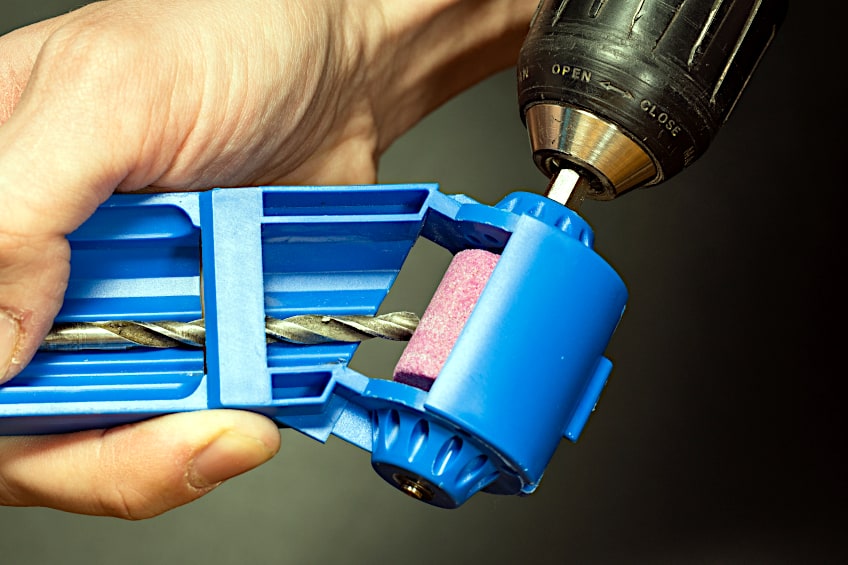
That’s pretty much everything you need to know about the different types of commonly-used drill bits that you could encounter on your journey. There are even more specialized drill bits out there for even more niche applications, but the ones covered above are generally seen and used most often. Drills and drill bits can be dangerous if used incorrectly, so be sure that you have the correct bit for your drill, that you have a drill that is in good working order, and that you wear some gloves and a set of goggles before you begin drilling into any surface.
Frequently Asked Questions
What Is the Best Drill Bit for Drilling Through Concrete?
The best type of drill bit to make holes in concrete would be a masonry bit. These bits are very durable and are capable of drilling through both brick and masonry quite easily. These are heavy-duty bits and tend to cost a bit more when compared to general-use drill bits, but they tend to last a long time if maintained and stored correctly.
Can I Use Wood Drill Bits on Metal Surfaces?
No, you cannot use wood drill bits on metal surfaces. Wood drill bits lack the coating and durability needed to penetrate metal surfaces, and if they do penetrate the surface initially, they will likely warp or break under the forces acting on them. Always use the right bit for the material you are attempting to penetrate.
How Do I Know When a Drill Bit Needs to Be Replaced?
Drill bits are cutting tools, and like any other cutting tool, when it fails to penetrate a surface it’s usually a sign that it either needs to be sharpened or replaced. Sharpening your drill bits after frequent use is one way to avoid getting stuck with dull bits when you need them to work.

I have been into woodworking since 2005 and woodturning since 2011. Because of my love for wood and woodworking, I started woodhappen.com to teach other enthusiasts about how to finish and seal wood, the best woodworking tools, the different types of wood, and everything else related to woodworking! Read more about me here.

